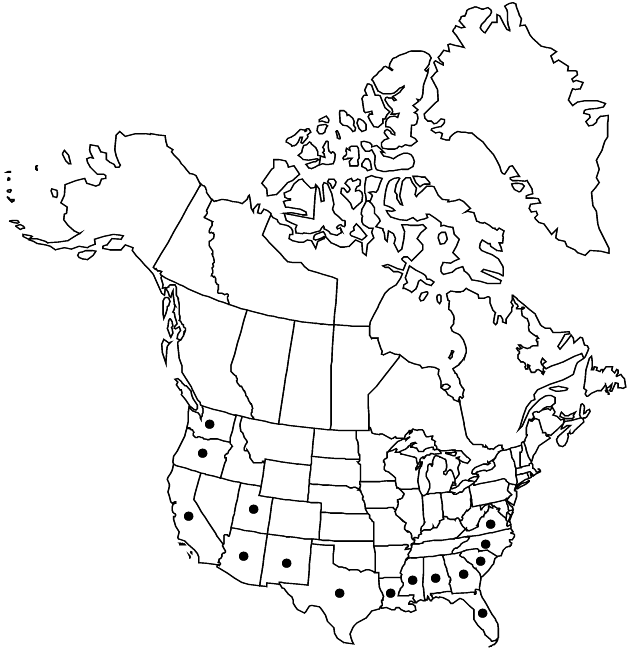Difference between revisions of "Conyza bonariensis"
Bull. Torrey Bot. Club 70: 632. 1943.
FNA>Volume Importer |
FNA>Volume Importer |
||
| Line 26: | Line 26: | ||
|elevation=0–500 m | |elevation=0–500 m | ||
|distribution=Ala.;Ariz.;Calif.;Fla.;Ga.;La.;Miss.;N.Mex. N.C.;Oreg.;S.C.;Tex.;Utah;Va.;South America. | |distribution=Ala.;Ariz.;Calif.;Fla.;Ga.;La.;Miss.;N.Mex. N.C.;Oreg.;S.C.;Tex.;Utah;Va.;South America. | ||
| − | |discussion=<p>Conyza bonariensis is widespread in tropical and warm-temperate regions of the world. It is thought to be native to South America.</p> | + | |discussion=<p><i>Conyza bonariensis</i> is widespread in tropical and warm-temperate regions of the world. It is thought to be native to South America.</p> |
|tables= | |tables= | ||
|references= | |references= | ||
| Line 51: | Line 51: | ||
|publication year=1943 | |publication year=1943 | ||
|special status= | |special status= | ||
| − | |source xml=https://jpend@bitbucket.org/aafc-mbb/fna-data-curation.git/src/ | + | |source xml=https://jpend@bitbucket.org/aafc-mbb/fna-data-curation.git/src/8f726806613d60c220dc4493de13607dd3150896/coarse_grained_fna_xml/V19-20-21/V20_804.xml |
|tribe=Asteraceae tribe Astereae | |tribe=Asteraceae tribe Astereae | ||
|genus=Conyza | |genus=Conyza | ||
Revision as of 15:27, 18 September 2019
Plants erect, 10–100(–150+) cm, branched mostly distally. Leaves: faces ± densely strigose or hispidulous; proximal blades oblanceolate, 30–80(–120+) × 10–25+ mm, obscurely lobed to coarsely toothed or entire; distal narrowly oblanceolate to linear, 10–50 × 2–10 mm, obscurely toothed or entire. Heads usually in paniculiform to racemiform, rarely corymbiform arrays. Involucres 3.5–5 mm. Phyllaries usually strigose or hispidulous; outer greenish to purplish, lanceolate, shorter; inner stramineous to purplish, linear-attenuate (more chartaceous to scarious, less hairy). Receptacles 3–5 mm diam. in fruit. Pistillate florets 60–150+; corollas ± equaling or surpassing styles, laminae 0 or to 0.3 mm. Disc florets 8–12+. Cypselae pale tan, 1–1.5 mm, faces glabrous or sparsely strigillose; pappi of 15–25+, pinkish, sordid, or tawny bristles 3–4+ mm. 2n = 54.
Phenology: Flowering year round, mostly late summer–fall.
Habitat: Disturbed sites, along roads and streets
Elevation: 0–500 m
Distribution

Ala., Ariz., Calif., Fla., Ga., La., Miss., N.Mex. N.C., Oreg., S.C., Tex., Utah, Va., South America.
Discussion
Conyza bonariensis is widespread in tropical and warm-temperate regions of the world. It is thought to be native to South America.
Selected References
None.